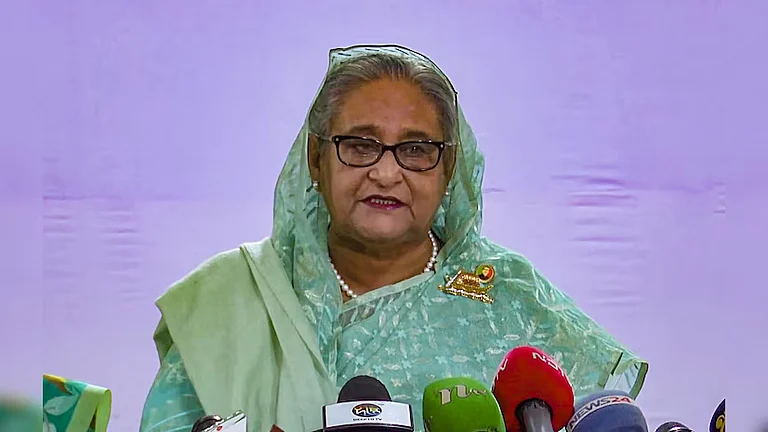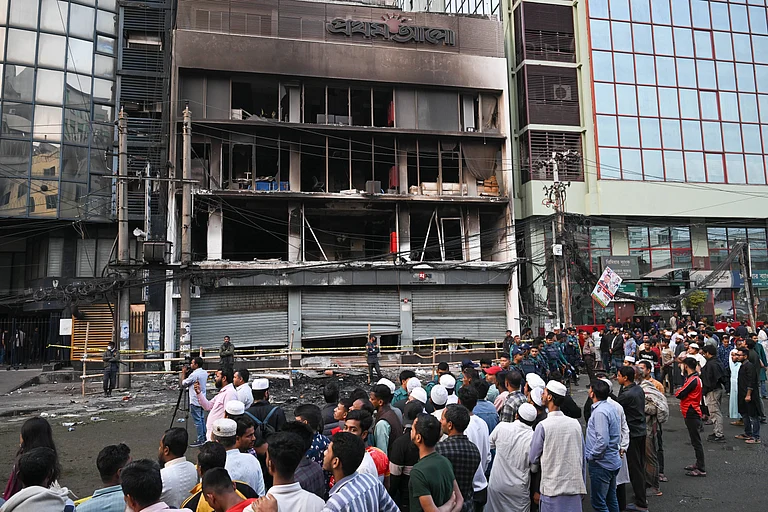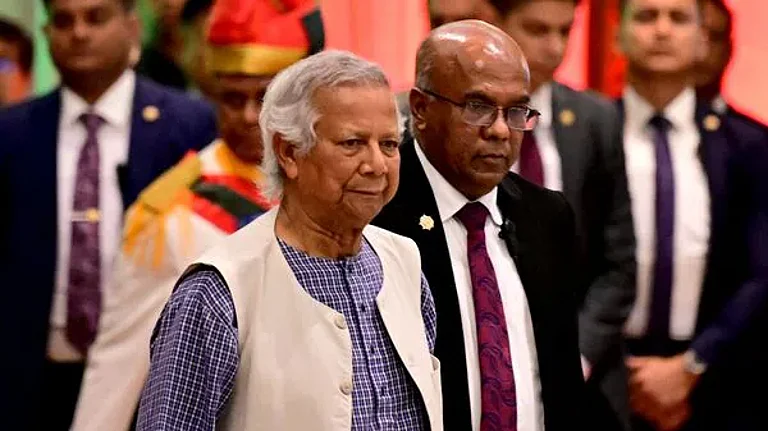What recently happened in Bangladesh may have been unimaginable in the recent past, but it was not entirely unexpected. We witnessed the entire event being captured and broadcasted through television and new media.
What dramatic scenes: widespread clashes, killings, massive military deployment, a tidal wave of people marching towards Dhaka, Sheikh Hasina fleeing the country by helicopter, and key government buildings being seized by the people. These scenes, captured not only by TV cameras but also by mobile phones and drones, were witnessed not just by the people of Bangladesh but by the entire world.
In this era, there is no way to stop the power of visual media, which is why the Hasina government shut down the internet twice for seven days during the movement. But even that couldn't prevent the inevitable outcome.
The brutal repression and killings carried out by the Sheikh Hasina government during this movement angered people from all walks of life. From rickshaw pullers to teachers, street children to doctors, and even artists from visual media—all took to the streets with one demand: “Enough is enough; it's time for you to leave.” The people had hoped that the Awami League, which claimed to uphold the spirit of the Liberation War, would bring them relief. However, over the past decade and a half, it became evident that, in the name of development, they had delivered nothing but rampant corruption, skyrocketing prices, market syndicates, the loss of voting rights, and persistent unemployment. These issues had already left people extremely frustrated. All that pent-up anger exploded during the July-August period. The final nail in the coffin of Sheikh Hasina's regime was hammered in by this "July Awakening." For this, no one else is to blame but Sheikh Hasina herself. Her arrogance and stubbornness ultimately led to her downfall.
On August 1, for the first time, artists, filmmakers, writers, and journalists associated with Bangladesh's visual media took to the streets to bid farewell to the fascist government. From that day forward, they regularly occupied the streets until Sheikh Hasina's departure. Not only did they dominate the streets, but they were also highly vocal on social media. Many artists and filmmakers turned their Facebook profiles red to show their support for the movement.
For a long time, filmmakers in Bangladesh have gradually started portraying the government's failures, mismanagement, and corruption in various films and web series. As a result, many have faced government backlash. Some films did not even receive clearance from the censor board. Movies like Rana Plaza and Saturday Afternoon were denied clearance for political reasons. A lawsuit was filed against a film like Hawa simply because of a lack of understanding of artistic truth. Despite these obstacles, independent filmmakers held press conferences during the Hasina government's tenure. There, they harshly criticised the outdated censor board. The ruling party then cleverly changed the name of the censor board and introduced new laws with more repressive regulations in 2023, calling it the Film Certification Act. Although the name changed from censorship to certification, artists believe that their freedom has been further curtailed through this process.
During the Awami League government's tenure, artists, independent filmmakers, and film workers demanded that films be included under the Ministry of Culture. However, the government kept it under the Ministry of Information. They did not heed these demands. Another long-standing demand was for a film centre, but the government did not show much interest in that either. They focused on how to use artists to maintain their image. Many artists were indeed used.
There is, however, a different story for a segment of the artistic community who have benefited from government favours, with some even becoming Members of Parliament. Every society has its group of beneficiaries, and such self-serving groups are also seen in private media. The Awami government had managed to bring many media outlets under its control. But despite this, the majority of those involved in the media and visual arts industry, upon witnessing Sheikh Hasina's month-and-a-half-long actions and massacres, sought an end to her nearly two-decade-long rule.
I can say with certainty that in the near future, we will see depictions of this decade-and-a-half of misrule and the character of a dictator in visual media. The concern, however, lies in the uncertainty about who will come to power next. The youth of Bangladesh envision the country as a liberal democracy where artists can express their creativity with complete freedom. They hope for a nation where no one will be imprisoned for writing a song or drawing a simple cartoon and where no one will be harassed for portraying a character in a drama. Screenwriters should not have to censor themselves while writing a screenplay.
The artistic community aspires to a state where those in power are sensitive and understand art. They also hope that, with the youth leading the way, the future Bangladesh will be a place where freedom of expression is fully guaranteed, discrimination against anyone is eradicated, and social dignity and justice are ensured. The artistic community fervently wishes that religious extremism and misogyny do not resurface in the future.
Since Sheikh Hasina's departure from the country on August 5, the way extremist forces have wreaked havoc on artworks, sculptures, historic buildings, museums, and collections related to the history of independence in various parts of the country is highly reprehensible. The entire nation has been embarrassed by the incidents of arson and looting at Ganabhaban, the National Parliament House, and Sheikh Mujibur Rahman's residence. The artistic community has also been shocked and angered. However, the protesting students were not involved in these attacks. Instead, from August 6, they engaged themselves in the restoration of the damaged areas. After attacks on several temples and minority homes across the country, these students, along with the army, took measures to guard them. The artistic community in Bangladesh has fully supported the way students have stepped forward to build the country after the successful uprising.
In witnessing the countless visual media created by amateurs and young people during the 2024 mass uprising, I find some comfort in one particular aspect: they are making fun of the leaders of the country's two major bourgeois parties. This trend of mockery is also evident in mainstream works. When a fascist government is in power, many things cannot be directly expressed in artistic media, as doing so could lead to imprisonment and persecution. Therefore, the criticism of a fascist rule must be done tactfully. In recent years, we have seen this same strategy on social media. People of all ages have trolled political leaders for their undemocratic and ridiculous statements.
Since visual literacy has increased significantly in our time, it has been observed that ordinary people are not only creating visual content but are also the primary consumers of it. In other words, they are both the producers and the consumers. As the political situation in Bangladesh worsened over the past few years, with people unable to vote or speak freely, they turned to trolling as a tool. They began to satirise important government figures. Interestingly, most of these short clips are no longer than a minute. Within this brief time, real events are either directly recreated or reimagined in a way that captures people's attention and entertains them. These contents can be termed political satire.
One example can be given: a very important figure in the previous government, Obaidul Quader, once fell off the stage during a public speech. The mishap occurred while he was talking about "Smart Bangladesh." At that moment, members of his party were also with him. People interpreted this as a metaphor for the downfall of the Awami League and created a massive amount of content around it. Some directly used the clip, while others re-enacted it.
Through these contents, this generation has expressed that they no longer want the traditional destructive politics. Alongside voting rights, they want to see the development of genuine democracy. They do not want nepotism in politics. Moreover, they want to see Bangladesh as a corruption-free and prosperous state. Today's youth wish for the world to take pride in Bangladesh and its people. This generation hopes for a radically changed and completely transformed Bangladesh.
(Views expressed are personal)
Bidhan Rebeiro is a Dhaka-based Essayist and Film Critic






.jpg?w=801&auto=format%2Ccompress&fit=max&format=webp&dpr=1.0)
















